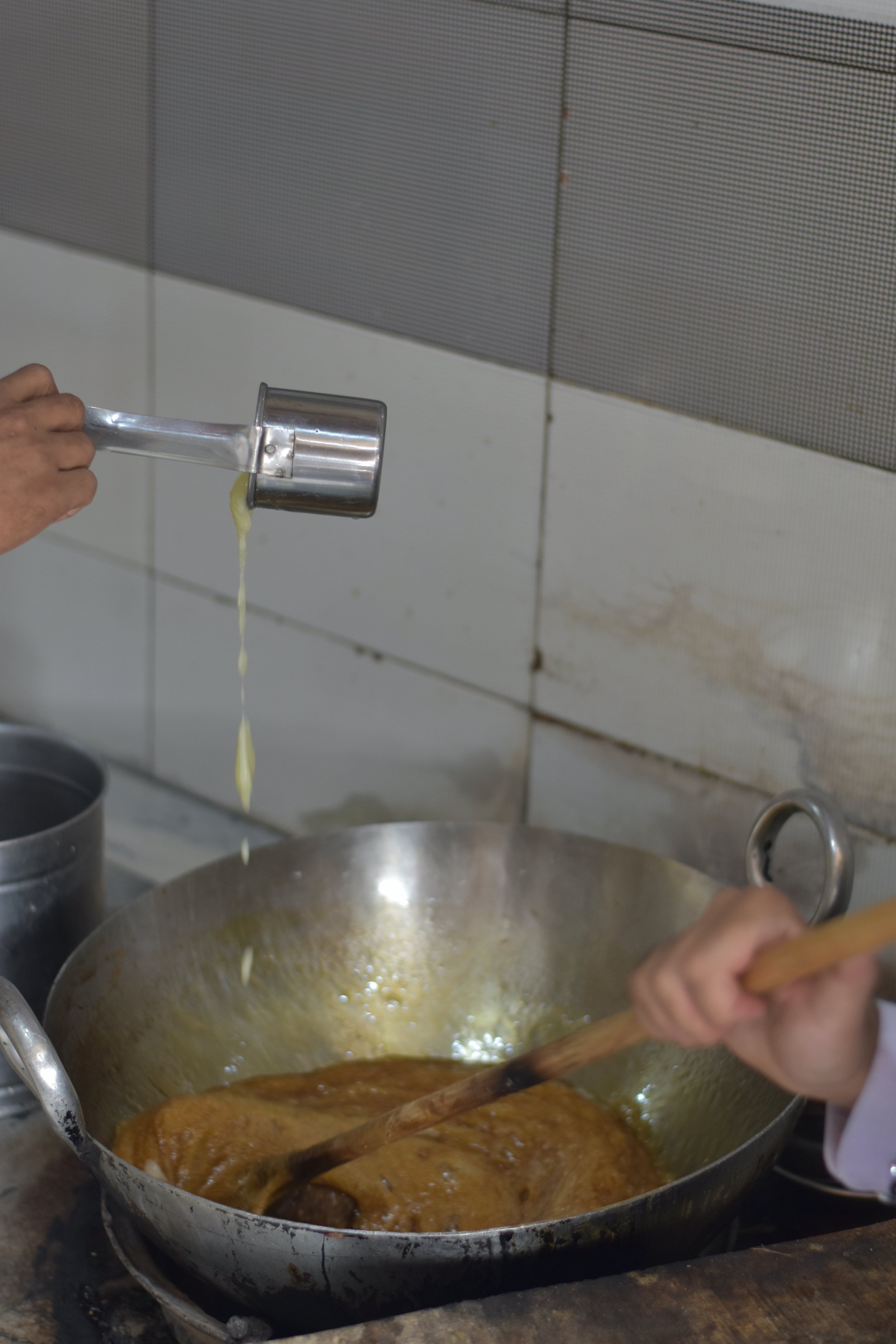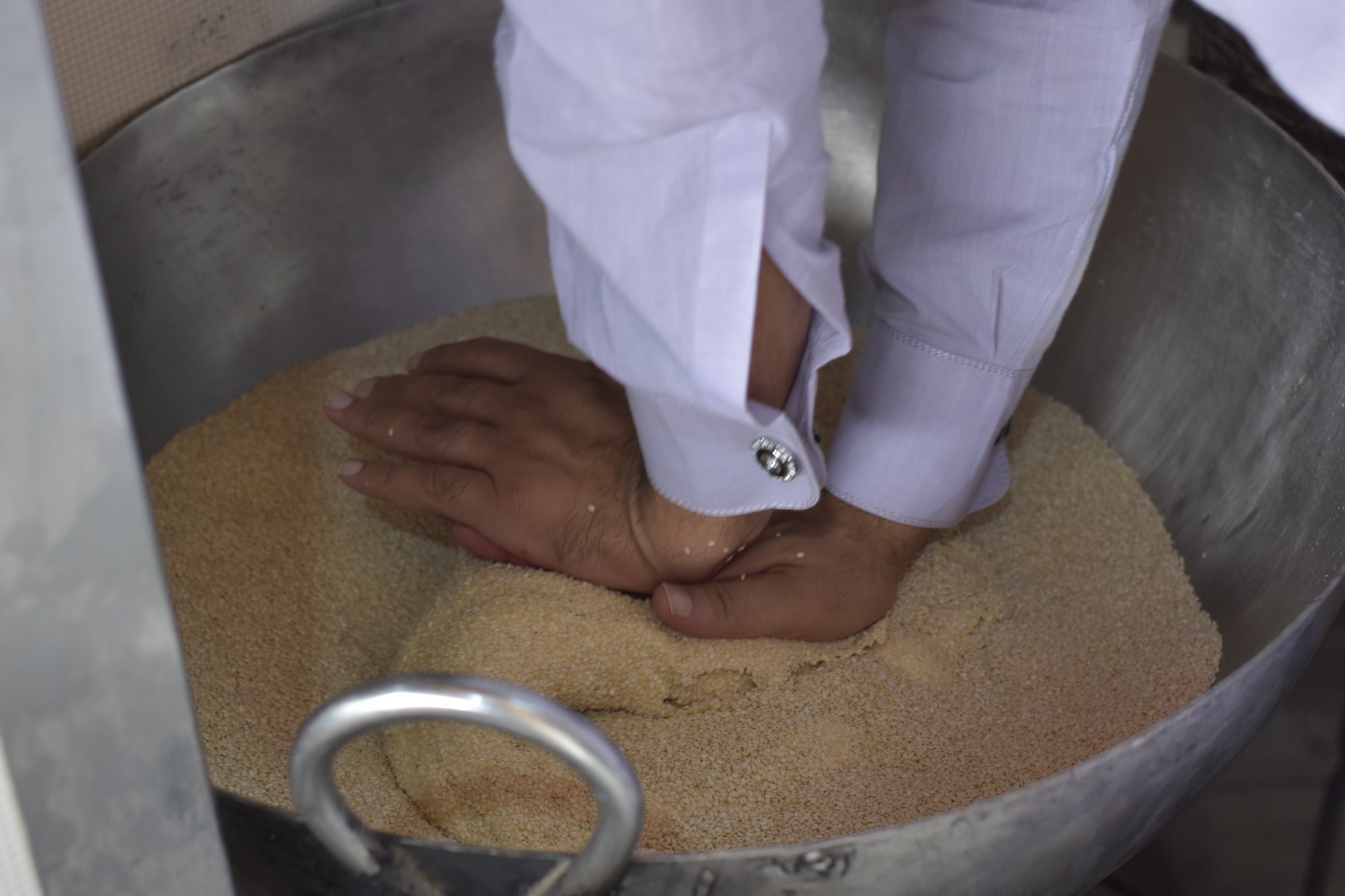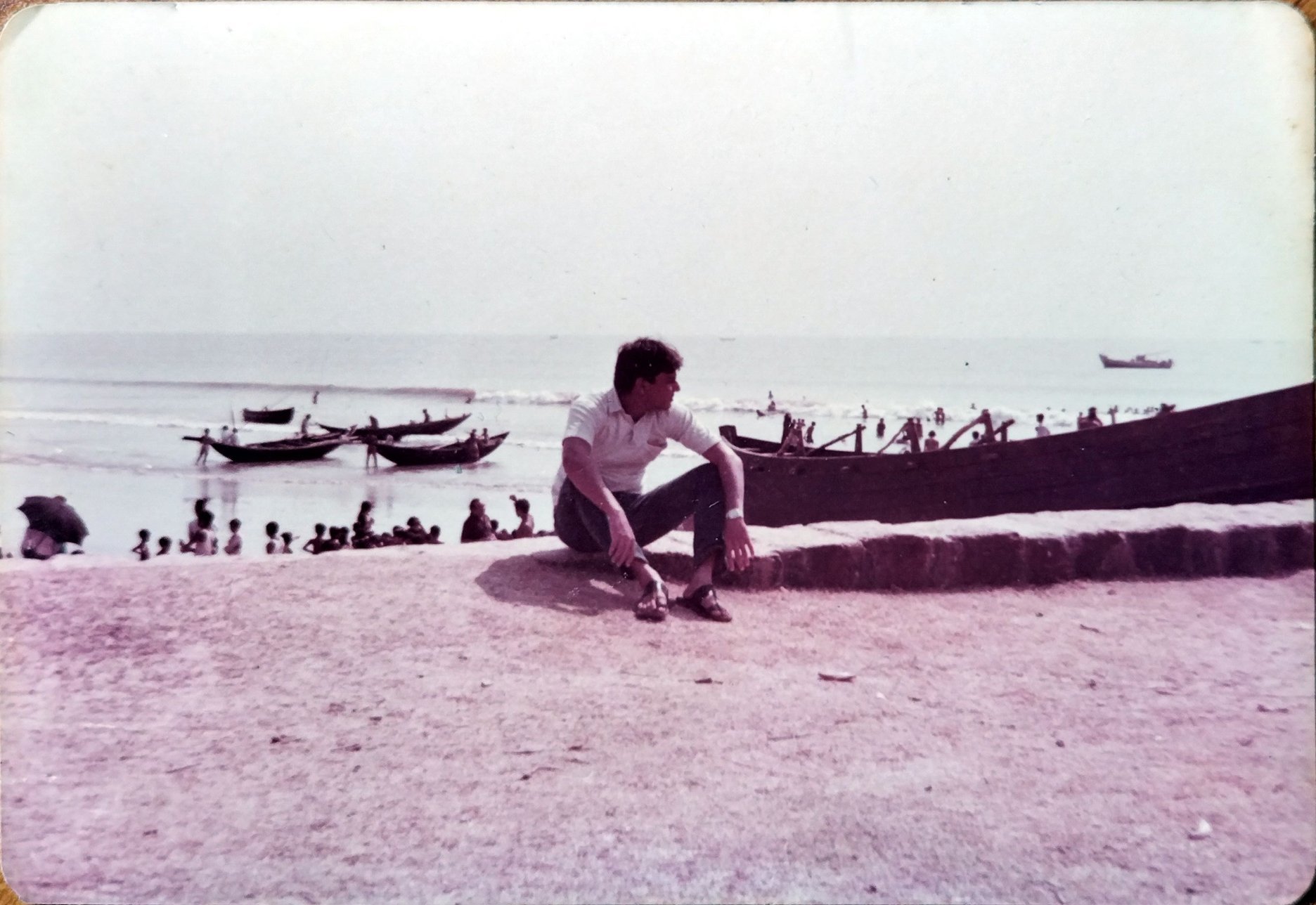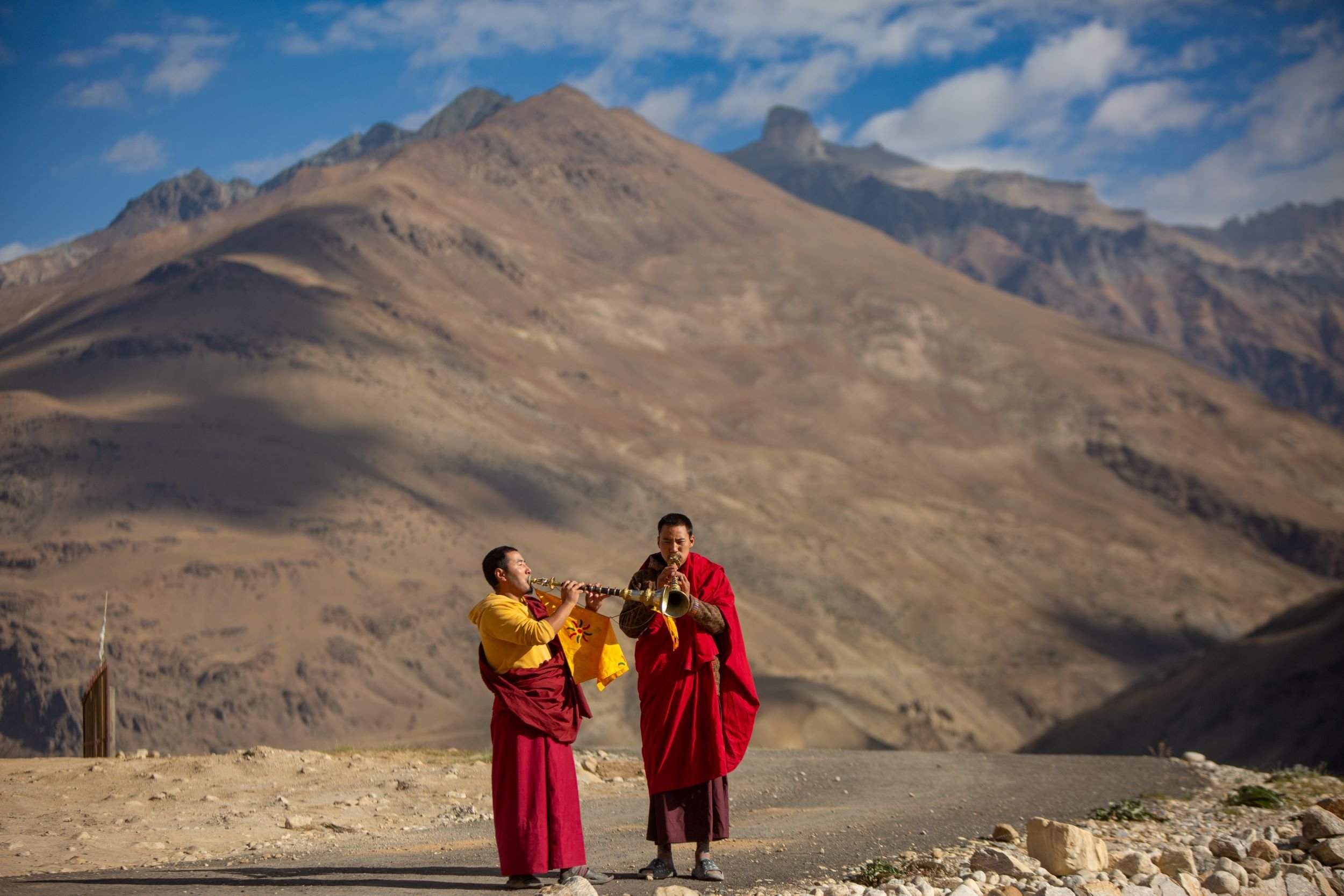Tilowaan: A Sikh Recipe Safeguarded by the Muslims of Sukho, Pakistan
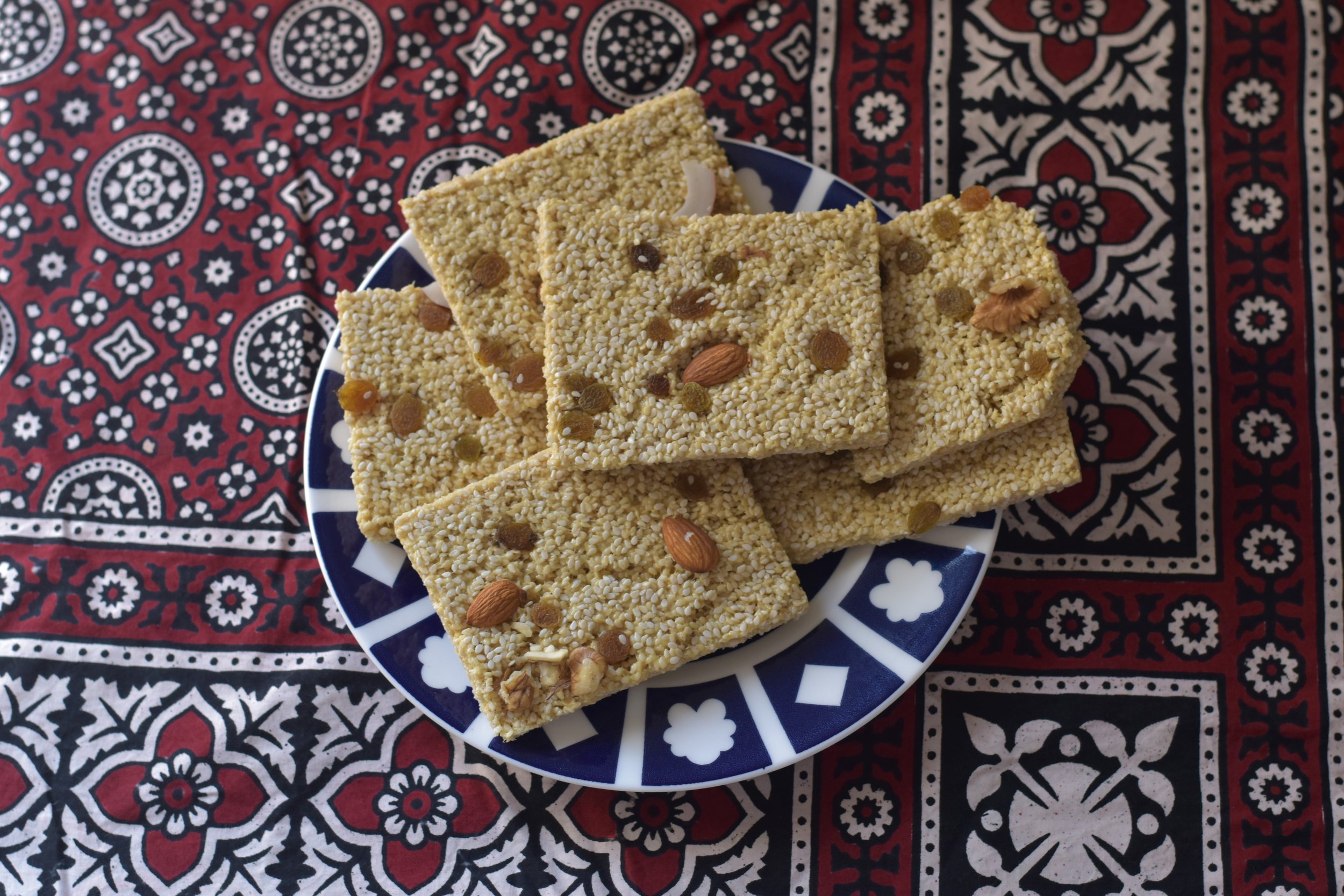
Ammad Ali writes about tilowaan, a delicacy originally by the Sikhs of the Punjab region in Pakistan, now a recipe safeguarded by the Muslims of Sukho.
Mr Anant, travelling from Vancouver, was visiting the village of Sukho in Pothwari heartland Gujar Khan, in Punjab, Pakistan. A visit to not just see his ancestral home, but to find the sweet delicacy he had been dreaming of for decades. This sweet, exclusive to the Sikh community pre-Parition, was one his forefathers had known how to make like reflexive muscle memory, but now lived only as dim recollections.
The Partition of India and Culinary Landscape
There are few documented histories of the culinary traditions that travelled during the Partition of India. Historians Sarah Ansari and William Gould termed Punjab and Bengal ‘the hot spots of Partition,’ as these regions were the most affected. Partition not only resulted in mass migration, violence and death, it had far-reaching impacts on the cultural and linguistic identities of Punjab and Bengal in particular, and the sub-continent in general. Food culture migrated with the people. The collective memory of first generation Partition migrants have been primarily riots, violence and killings — change in cuisine have small mention, but was a significant fatality.
Madhur Jaffrey, in her autobiography ‘Climbing the Mango Trees: A memoir of a childhood in India’, writes about the changing culinary landscape of Delhi after the Muslim population left the city. Within months, Delhi’s food scene was greatly influenced by Punjabi Partition migrants from West Punjab. She describes this cultural shift: “Delhi succumbed and became, to a large extent, a Punjabi town.”
Tilowaan and Sikh settlement in Pothwar
The story of Tilowaan begins with the political rise of Sikhs in Punjab at the end of 18th century. Sikhs in the area of Pothwar founded new villages and towns. In the 19th century, Sikhs of Sukho started to make a sweet delicacy they called tilowaan.
Peshawari gurr (jaggery) is a key ingredient in tilowaan
A sprinkling powder of green cardamom
The arid landscape of Pothwari heartland, Gujar Khan, was never rich in agricultural production given the region’s droughts and poor systems of irrigation. However, Sukho had rich fertile lands, and produced sesame seeds as its prime commodity. In pre-Partition Sukho, the Sikh community were the custodians of tilowaan; today, decades after the brutal migration of Partition, it is the Muslims of the village who safeguard this recipe and prepare this sweetmeat. And in memoriam, when Sikhs visit during Vaisakhi and Gurpurab, they feast on tilowaan, a memory now preserved by the Muslims of Sukho.
The annual fair at Baba Mohan Das Samadhi was one of the largest religio-cultural gatherings in Pothwar. Thousands of Hindus and Sikhs would travel to attend, and tilowaan was one of the most celebrated delicacies that people from across Punjab came to taste. Today, Samadhi is in shambles, and there has not been an annual fair since 1947.
Stirring the jaggery with a 'masaddi'
Adding desi ghee in to the jaggery paste
The hot mix is now stretched; a difficult job that requires a lot of physical effort
Tilowaan After Partition
Tilowaan is named from ’til’ the Punjabi word for white sesame. To make tilowaan, sesame seeds are mixed with Peshwari gurr (jaggery), glucose, ghee and dry fruits and is a physically strenuous process. When the last Sikh left Sukho, the knowledge and skill of making tilowaan disappeared too. But tilowaan saw a slow and unexpected revival. Raja Said Khan and his brother used their combined culinary skill to recreate and revive the recipe for tilowaan. Following the success of their tilowaan business, others started making the sweet as well. Today, there are close to half a dozen tilowaan shops in Sukho, run by Muslim families in the region.
Jasim who runs a family business making tilowaan says his family adapted the delicacy as the recipe evolved. “Before Partition, Sardar Tarlook Singh of Sukho was most famous for his tilowaan. My grandfather moved to Sukho from Naaba, East Punjab during Partition. In the early 1980s, my father, Muhammad Saleem Bhola experimented by adding desi ghee to the sweet.”
Jasim believe that tilowaan was cooked without ghee before Partition, and says his family introduced this ingredient to the recipe. He proudly shares photographs on his phone to establish the number of Sikhs who travel to visit his shop. Winters are the busiest for Jasim and his workers; they work through the day and night in season, to meet demand.
The paste is now poured into a wok full of sesame seeds and kneaded
The tilowaan is shaped and rolled with walnuts, almonds, khopra and raisins
Since Partition, tilowaan has come to represent a sense of homecoming to Sikh migrants. While on pilgrimage and travelling to Pakistan, Sikh pilgrims visit Sukho to eat tilowaan, and carry it back as gifts for their loved ones. After 75 years of Partition, many dishes are now lost to history; but in the stories of loss and belonging, tilowaan represents a shared heritage of culinary tradition safeguarded by communities across the border.
Ammad Ali is a freelance journalist, travel writer, historian and translator based in Karachi. He is interested in documenting how Partition impacted the gastronomic landscape of Pakistan in general , and the food of Pothwar in particular. He can be reached via email.
ALSO ON THE GOYA JOURNAL



